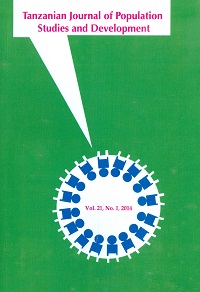Economic Benefits of Educating Girls In Developing Countries
Abstract
The main objective of this paper is to uncover economic gains and society ' s benefits when investing in girls ' education with the hope that the results will lead policy makers to reconsider the current underinvestment in girls. It explores the linkage between investing in girls and potential increase in national income by examining three widely prevalent aspects of adolescent girls ' lives: early school dropout, teenage pregnancy, and joblessness in Tanzania. Secondary data have been used for some comparability to allow for cross-country comparisons of the opportunity cost of investing on girls ' education. The data come from selected developing countries in Asia and Sub-Sahara Africa that have significant vulnerabilities for adolescent girls, or validating existing conditions aggravating adolescent girls ' social exclusion, which suggest a lower value for girl-children in the society. The findings reveal that investing in girls ' education leads to lifetime earning of today ' s cohort of girls that is equivalent to 68% of annual domestic product. The cost of adolescent pregnancy as a share of gross domestic could be as high as 30% or low as 1% over a girl ' s lifetime. The paper concludes that, as understanding grows about how much and how quickly education can result into tangible benefits for girls, their families and their countries, there is need to summon more political will and resources to provide girls and boys equal access to quality education.
References
Association for Women's Rights in Development (AWID). 2012. Getting at the Roots: Re-integrating Human Rights and Gender Equality in the Post-2015 Development Agenda. Association for Women ' s Rights in Development. Chant, S.
Basic Education Statistics in Tanzania (BEST). 2009. School Drop-Out Rate Raises Alarm in Tanzania. Retrieved from http://allafrica.com/id/00022032.html.
Bradshaw, S., J. Castellino, & B. Diop. 2013. Women ' s Role in Economic Development: Overcoming the Constraints: A Global Initiative for the United Nations for the Sustainable Development Solutions Network Thematic Group on the "Challenges of Social Inclusion: Gender, Inequalities and Human Rights".
Coenjaerts, C., D. Newhouse & C. Wolff. 2009. Promoting Pro-poor Growth: Youth Employment. Retrieved from OECD: http://www.oecd.org/ povertyeradication/ 27/4/43280339.pdf
Cunningham, W. & E. Bagby. 2010. Factors That Predispose Youth to Risk in Mexico and Chile. Policy Research Working Paper 5333. Washington DC: The World Bank.
Cunningham, W. & R. GarcÃa-Verdú. (Forthcoming). Estimates of the Cost of Early School Leaving, Youth Unemployment and Youth Joblessness in Latin America and the Caribbean. Background paper for the Regional Study on Youth at Risk in Latin America and the Caribbean. Washington DC: The World Bank.
Cunningham, W., L. Cohan, S. Naudeau & L. McGinnis. 2008. Supporting Youth at Risk: A Policy Toolkit for Middle Income Countries. Washington DC: The World Bank.
Cunningham, W., M. L. S. Puerta & A. Wuermli. 2010. Active Labour Market Programs for Youth: A Framework to Guide Youth Employment Interventions. World Bank Employment Policy Primer No. 16. Washington DC: The World Bank.
Dollar, D. & R. Gatti. 1999. Gender Inequality, Income, and Growth: Are Good Times Good for Women? World Bank Policy Research Report on Gender and Development, Working Paper Series 1. Washington, D.C: World Bank URT: http://www.worldbank.org.
Elizabeth, N., B. G. Rachel, R. Andrea, R. Gwendolyn & Y. Vierboom. 2013. Laws Affecting Reproductive Health and Rights: 2013 State Policy Review. Guttmacher Institute.
Erik A. Hanushek, E.A. & D. D. Kimko. 2000. Schooling, Labour Force Quality, and the Growth of Nations. American Economic Review, 90(5): 1184 €“208.
George, P. & A. P. Harry.2002. Returns to Investment in Education: A Further Update. World Bank Policy Research Working Paper 2881. Washington D.C.: World Bank
Global Campaign for Education (GCE). 2012. Gender Discrimination in Education: The Violation of Rights for Women and Girls. A Report Submitted to the Committee on the Elimination Of Discrimination Against Women (CEDAW). Retrieved from www. campaignforeducation. org (12 December, 2015).
HakiElimu. 2010. How to Ensure Educational Success for Girls: They Have the Right to Complete Their Studies. Retrieved from http://www.hakielimu.org. (12 December, 2015).
Hanushek, E. & L. Woessmann. 2007. The Role of Education Quality in Economic Growth. Policy Research Working Paper 4122. Washington DC: World Bank.
Herz, B. & G. Sperling. 2004. What Works in Girls ' Education: Evidence and Policies from the Developing World. Washington DC: Council on Foreign Relations.


